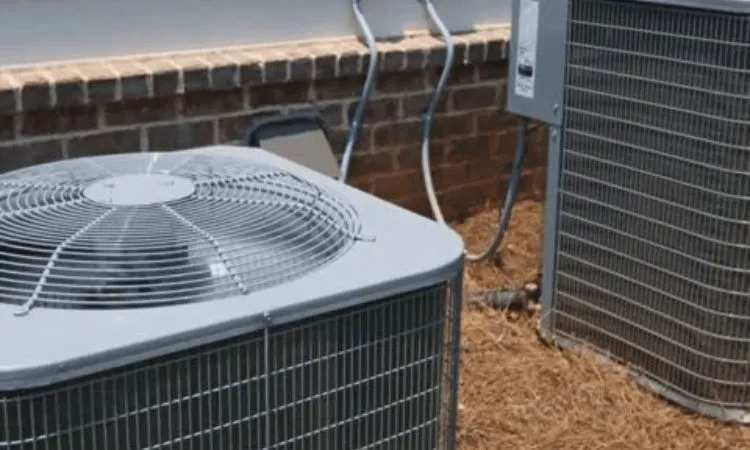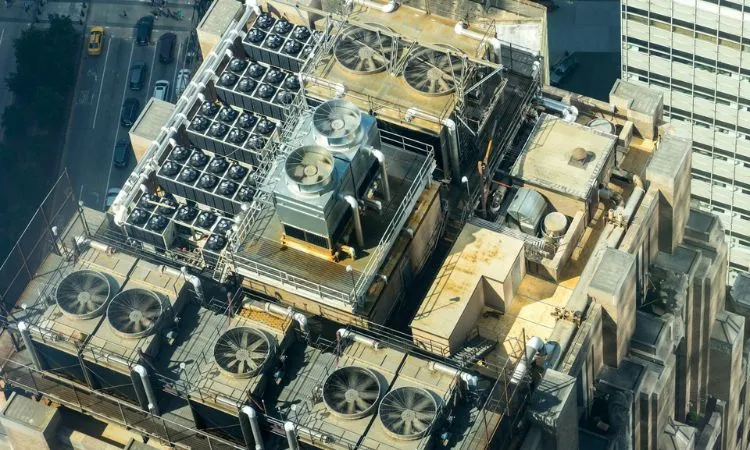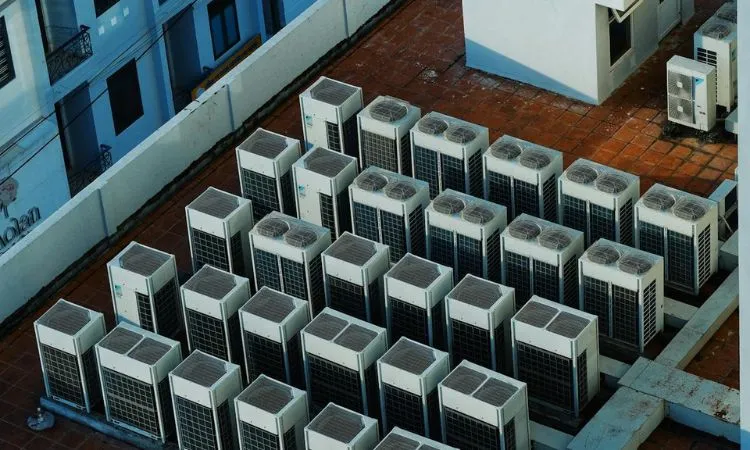Is your indoor environment uncomfortable, stuffy, or poorly ventilated? A lack of understanding of your HVAC system could be at fault. Without knowledge of how HVAC works, you’re left dealing with inefficient heating, cooling, and air quality, causing discomfort, higher energy bills, and potential health risks.
HVAC stands for Heating, Ventilation, and Air Conditioning, which collectively control the temperature, humidity, and air quality inside buildings, ensuring comfort, safety, and health.
Have you ever considered how critical the right HVAC system is to your comfort, energy efficiency, and overall health? This guide will help you understand HVAC fundamentals clearly and simply.
Table of Contents
ToggleWhat does HVAC mean?
HVAC is a common term in building and construction, but what exactly does it imply in practical terms?
HVAC is short for Heating, Ventilation, and Air Conditioning. It describes systems designed to regulate indoor temperatures, manage humidity levels, and maintain indoor air quality to ensure comfortable and safe living and working environments.
Understanding HVAC means knowing how these three critical functions combine to create comfortable indoor spaces year-round. Without proper HVAC solutions, living spaces become uncomfortable, unhealthy, and inefficient.

How Important is HVAC in Daily Life?
Consider the last time your air conditioner failed in summer or heating stopped during winter. These systems significantly influence comfort and productivity. A quality HVAC system ensures health by controlling humidity and air quality, reducing allergens, mold, and airborne diseases.
What are the components that make up an HVAC system?
To grasp HVAC fully, it’s essential to understand what comprises a typical system.
An HVAC system typically includes heating units (like furnaces or heat pumps), cooling units (such as air conditioners), ventilation components (fans, ducts, vents), and control units like thermostats and sensors.
Essential Components Explained
- Furnace or Boiler: Generates heat.
- Air Conditioning Unit: Provides cooling.
- Heat Pump: Transfers heat between indoors and outdoors.
- Ductwork: Moves air throughout the building.
- Thermostat: Controls temperature and settings.
- Air Filters: Improve air quality by capturing pollutants.
| Component | Function | Importance Level |
|---|---|---|
| Furnace | Produces heat | High |
| AC Unit | Cools indoor air | High |
| Ventilation | Circulates and filters air | Medium-High |
| Thermostat | Controls HVAC system settings | Medium |
| Ducts | Distribute air evenly | High |
Each component contributes significantly to comfort, efficiency, and air quality.
Types of HVAC systems

Different buildings and climates require various types of HVAC solutions. So, what options exist?
Common HVAC systems include split systems, packaged heating and air systems, ductless mini-splits, and hybrid heat pump systems. Each system has its strengths, making it suitable for different building types and climate zones.
Popular HVAC System Types
- Split Systems: Comprise separate indoor and outdoor units, ideal for residential use.
- Packaged Systems: All components are housed in one unit, common in commercial spaces.
- Ductless Mini-splits: Offer individual control in separate rooms without ductwork.
- Hybrid Systems: Combine traditional furnace and heat pump for better energy efficiency.
Choosing the right type depends on your building structure, regional climate, energy efficiency needs, and budget.
How do HVAC systems work?

Have you ever wondered how your indoor climate remains comfortable year-round?
HVAC systems work by pulling air into a system, conditioning it through heating or cooling coils, circulating it via fans and ducts, and finally expelling stale air outdoors or re-circulating conditioned air indoors.
The Basic Workflow of an HVAC System:
- Air Intake: Indoor air is drawn into the HVAC system through filters.
- Air Conditioning or Heating: The air passes over coils heated or cooled based on your thermostat settings.
- Distribution: Conditioned air moves through ductwork and vents, circulating throughout the building.
- Ventilation: Fresh air is brought indoors, and stale air is expelled outdoors, maintaining air quality.
This continuous cycle ensures indoor environments remain comfortable, healthy, and fresh.
HVAC Codes and Standards
Why do HVAC systems need regulations, and what are these guidelines?
HVAC codes and standards are rules that ensure HVAC systems are safe, efficient, and environmentally friendly. These guidelines include energy efficiency ratings, safety regulations, installation standards, and indoor air quality benchmarks.
Common HVAC Standards and Their Purpose
| Standard/Code | Purpose |
|---|---|
| ASHRAE | Air quality, efficiency standards |
| NFPA | Fire safety and operational safety |
| EPA Regulations | Environmental impact and refrigerant guidelines |
| IECC | Energy conservation compliance |
Compliance ensures reliability, safety, and reduces environmental impacts.
What HVAC system is right for you?
With many HVAC options available, how do you choose the best one for your specific needs?
Selecting an HVAC system depends on your local climate, home size, energy efficiency goals, installation budget, and personal comfort preferences.
Factors to Consider When Selecting an HVAC System
- Climate: Heating vs. cooling demands.
- Building Size: Large buildings often need central or packaged units.
- Energy Efficiency: Consider SEER and AFUE ratings for operational savings.
- Budget: Initial investment versus long-term savings.
A properly selected HVAC system saves money and improves comfort significantly.
How much does a new HVAC system cost?

Budget is crucial in HVAC installations, but how much should you anticipate spending?
The cost of an HVAC system can range from $4,000 to over $15,000, depending on system size, type, efficiency ratings, complexity of installation, and regional pricing differences.
Cost Breakdown of HVAC Installation
| System Type | Average Price Range (USD) |
|---|---|
| Split System | $5,000 – $10,000 |
| Packaged System | $7,000 – $15,000 |
| Ductless Mini-Splits | $3,500 – $8,000 |
| Hybrid Systems | $6,000 – $12,000 |
Careful planning can balance cost, performance, and savings.
How to install an HVAC system
Installing an HVAC system isn’t simple, but what does the process involve?
HVAC installation involves sizing equipment correctly, installing indoor and outdoor units, setting up ductwork or refrigerant lines, wiring electrical components, and performing system tests for performance and safety.
HVAC Installation Process Overview
- Assessment of building needs
- Selecting proper equipment
- Installing indoor/outdoor units and ducts
- Connecting electrical components and thermostat
- System testing and adjustments
Hiring professionals ensures installation accuracy, safety, and efficiency.
How to become an HVAC technician
Considering an HVAC career? What’s involved?
Becoming an HVAC technician requires completing vocational training or apprenticeships, earning certification, gaining practical experience, and continuous training to stay current with HVAC technologies and regulations.
Steps to Become an HVAC Technician
- Obtain a high school diploma
- Complete vocational HVAC training
- Gain hands-on apprenticeship experience
- Obtain EPA certifications
- Pursue continuing education for career advancement
Skilled technicians enjoy stable careers with good earnings potential.
Conclusion
Understanding HVAC means better choices for your comfort, budget, and environment. Knowing HVAC basics, components, system types, installation processes, and standards helps ensure your indoor spaces are comfortable and efficient year-round.
